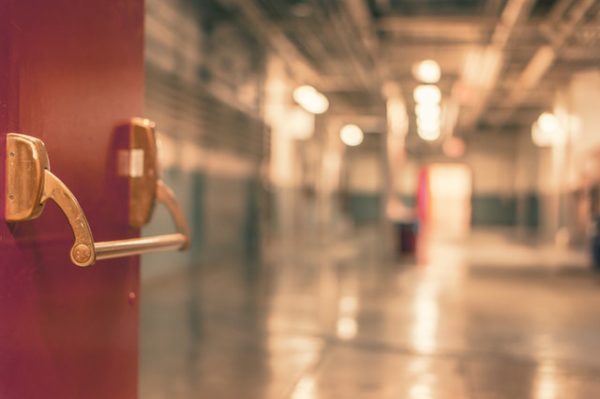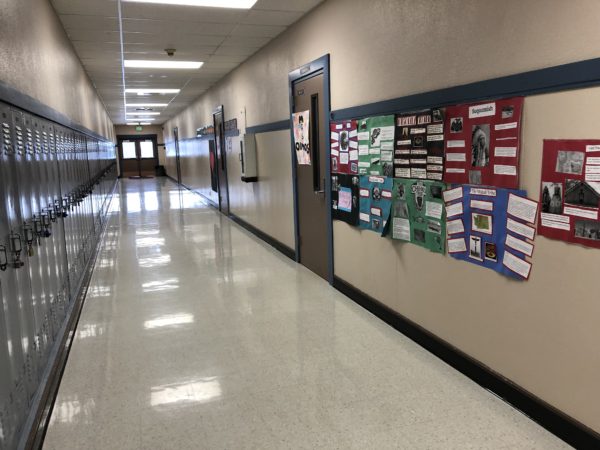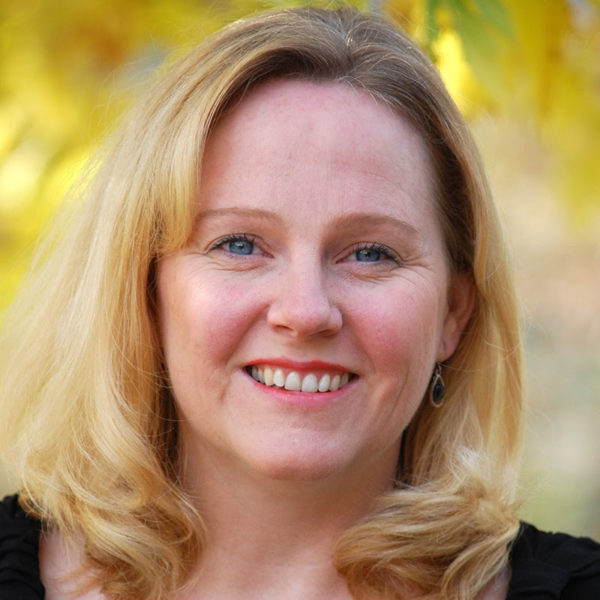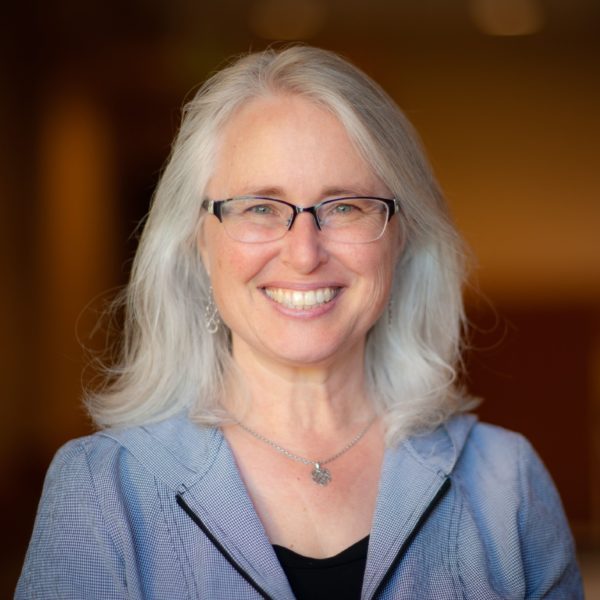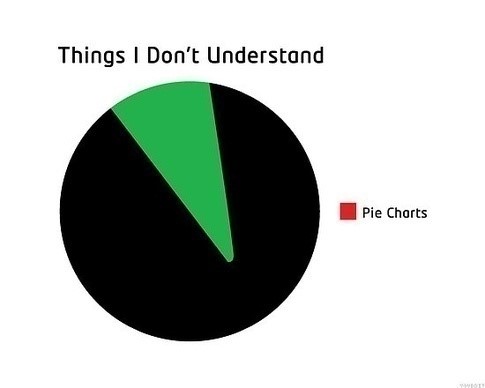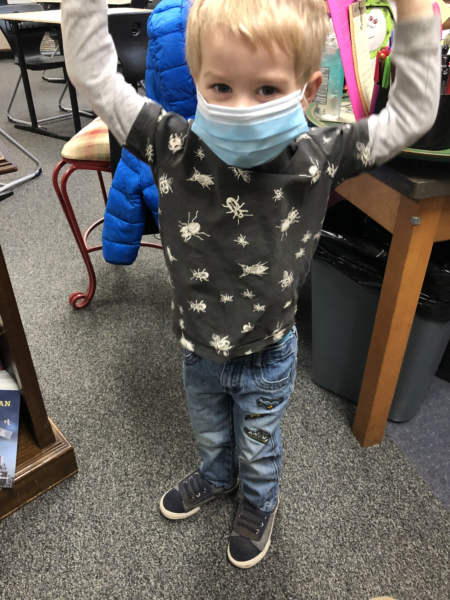CSTP Updates
• February 6: Zooming In & Out on Inclusionary Practices Dr. Katie Novak and Shelley Moore
• March 21: Culturally Responsive Education in the Classroom: An Equity Framework for Pedagogy written by Dr. Adeyemi Stembridge
It is hard to believe that we are already three weeks into the 2023 Legislative Session. We continue to see daily bill introductions, which will likely taper off over the next few weeks. A quick reminder that lawmakers are approaching their first legislative cut-off date as Thursday, February 17, will be the last day for legislators to pass bills out of committee in their respective house of origin.
This week both the House Education and Senate Early Learning & K-12 Education Committees heard bills that were essentially mirrors of each other; focused on equity amongst our most vulnerable learners. HB 1109 and SB 5311, both of which would increase special education funding, were passed out of their respective committees. HB 1238 and SB 5339, which would guarantee free school meal funding for all, gained much attention on their committee floors and are both scheduled for executive session next week. Lastly, SB 5257, which ensures that elementary students receive a minimum of 45 minutes of recess every day, had huge support in committee and is up for executive session later this week. The house is also poised with their version: HB 1504. The “recess-bill,” drew the attention of The Seattle Times stating, “The physical and social activity it enables, research shows, can lower stress hormones and help children get the wiggles out so they can be more present in the classroom.” SB 5257 is sponsored by state Senator T’wina Nobles.
Education Hearings for Next Week on TVW.org
House Education Committee
- Monday, January 30 at 1:30pm
- Tuesday, January 31 at 4pm
- Thursday, February 2 at 8am
Senate Early Learning & K12 Education
- Monday, January 30 at 1:30pm
- Wednesday, February 1 at 1:30pm
- Thursday, February 2 at 1:30pm
New Bills
HB 1504: which would ensure that elementary school students receive sufficient daily recess.
HB 1536: which would clarify requirements governing the withholding of high school diplomas.
HB 1549: which aims to increase AP course options.
HB 1550: which would assist eligible children in need of additional preparation to be successful in kindergarten by establishing the transition to kindergarten program.
HB 1565: which aims to support and strengthen the professional education workforce through recruitment, residency, research, and retention strategies.
HB 1609: which concerns school library information and technology programs.
SB 5505: which aims to address learning loss by expanding the school year.
SB 5511: which would enhance and improve the equity of K-12 education funding.
SB 5527: which would add additional courses to the list of courses approved as a graduation pathway option.
SB 5558: which aims to recognize the fundamental right of parents and guardians to direct the upbringing and education of their children.
SB 5559: which concerns restraint or isolation of students in public schools and educational programs.
Bills We’re Following
HB 1003: which would lower dual credit program costs for eligible students with financial need by creating a subsidy program, reducing per college credit fees for college in the high school students, and revising eligibility for the Running Start program tuition fee waiver, and would also make the Running Start program permanent to pilot institutions (hearing time: 37:11). Testifying in support: representatives from SBCTC, OSPI, Lake Washington SD, UFWS and CWU.
HB 1013: which would require OSPI and Washington ESDs to jointly establish a regional apprenticeship pilot program with one site each in Eastern and Western Washington (hearing time: 49:55). Testifying in support: a student representative from the SBE, representatives from Curlew SD, Marysville SD, NCESD, WSSCA, and the WTIA. Testifying in opposition: representatives from the Conservative Ladies of Washington. Testifying as “other”: representatives from the MCAWW. The bill was passed out of committee.
HB 1015: which revises minimum employment requirements for paraeducators (hearing time: 3:32 and 17:44). Testifying in support: representatives from the Rural Ed Center, Highline SD, Lake Washington SD, PESB, WEA, PSE and the Lynden SD. The bill was passed out of committee.
HB 1071: which would require OSPI to allocate state funding to school districts for one school resource officer (SRO) on each public school campus campus (hearing time 0:59 and 57:33). Testifying in support: representatives from the Chehalis SD, WACOPS and the WASPC. Testifying in opposition: representatives from the ACLU of WA, HEA, and a concerned citizen.
HB 1109: which would provide additional special education funding to school districts in order to increase initial evaluations during summers (hearing time: 9:33 and 35:39). Testifying in support: representatives from OSPI, WEA, WSSDA and WSPTA. Testifying as “other”: representatives from Lake Washington SD. The bill was passed out of committee.
HB 1113: which would require the Professional Educator Standards Board (PESB) to adopt rules for reviewing and vacating reprimands issued to certificated professional educators (hearing time: 47:57). Testifying in support: a concerned citizen and the WEA. Testifying in opposition: representatives from OSPI. The bill was passed out of committee.
HB 1146: which would require schools to notify high school students and their families about available dual credit programs and any available financial assistance (hearing time: 27:07 and 37:11). Testifying in support: representatives from SBCTC, UFWS and COP.
HB 1207: which aims to prevent and respond to harassment, intimidation, bullying, and discrimination in schools through updated policies and procedures (hearing time: 0:33 and 35:27). Testifying in support: representatives from OSPI and Bellevue SD. The bill was passed out of committee.
HB 1228: which establishes grant programs for establishing or expanding dual language education programs and tribal language education programs and would establish multilingual skill bonuses for certificated instructional staff and paraeducators. (hearing time: 0:33). Testifying in support: representatives from the WEA, Shelton SD, Wahluke SD, Yakima SD, the Latino Civic Alliance, Children Action Network, OSPI, several concerned citizens and the Highline PS.
HB 1238: which requires public schools, beginning with the 2023-24 school year, to provide breakfast and lunch each school day to any requesting students and at no charge to the students (hearing time: 128:08). Testifying in support: representatives from OSPI, SCAN, WSAND, WEA, Seattle PS, SBE, WSSDA, Bellingham PS and the WCAAP. Testifying in opposition: representatives from the Chewelah SD.
HB 1239: which would establish a simple and uniform system for complaints related to, and instituting a code of educator ethics for, conduct within or involving public elementary and secondary schools (hearing time: 1:32:12). Testifying in support: representatives from OSPI and the SCPTSA. Testifying in opposition: representatives from the Conservative Ladies of WA and Washington Policy Center. Testifying as “other”: representatives from the WEA.
HB 1277: which would establish rules to improve the consistency and quality of the implementation of the fundamental courses of study for paraeducators (hearing time: 14:23). Testifying in support: representatives from the WEA, PESB and Yelm Community Schools. The bill was passed out of committee.
HB 1316: which would lower dual enrollment program costs for eligible students from $65 to $42.50 per credit by creating a subsidy program, incentivizing reduction of per college credit fees charged to college in the high school students, and revising eligibility for the Running Start (RS) program tuition fee waiver (hearing time: 27:07 and 37:11). Testifying in support: representatives from SBCTC, OSPI, UFWS and CWU.
HB 1332: which would require all school districts to incorporate a tribal sovereignty curriculum into their social studies curricula by September 1, 2023, as well as require districts to consult with the nearest federally recognized Indian tribe(s) about incorporating materials about their history, culture, and government into their social studies curricula by September 1, 2025 (hearing time: 40:08). Testifying in support: representatives from OSPI, SBE and the CTUIR.
SB 5019: which removes “classified staff providing student and staff safety” from the definition of physical, social, and emotional support staff and the specific funding considerations for that group (hearing time: 26:34). Testifying in support: representatives from the WEA, NASW and OSPI. Testifying as “other”: representatives from the WSSDA, Lake Washington SD and PSE. The bill was passed out of committee and sent to the Senate Rules Committee.
SB 5020: which would lower the minimum age for compulsory school attendance from eight to six years old, and amend truancy provisions to align with this change, as well as require parents who homeschool to file an annual declaration of intent beginning at age 6 (hearing time: 46:17). Testifying in opposition: representatives from the Conservative Ladies of WA and several concerned citizens. The bill was passed out of committee and sent to the Senate Ways & Means Committee.
SB 5038: which would modify deadlines for notice of nonrenewal of certificated educator contracts from May 15th to June 1st (hearing time: 1:03:44). Testifying as “other”: representatives from the WEA.
SB 5048: which would eliminate college in the high school fees. The bill was passed out of committee and sent to the Senate Ways & Means Committee.
SB 5054: which would modify instructional hours to include time students spend in educational activities under the supervision of non-certificated staff while teachers participate in professional learning communities (PLCs) as well as encourage school districts to adopt a school calendar that includes at least four hours per week for teachers to engage in PLCs during the school day (hearing time: 3:08). Testifying in support: representatives from the WEA. Testifying in opposition: representatives from the Conservative Ladies of Washington.
SB 5072: which would establish new requirements for identifying students who may be eligible for highly capable services, including conducting universal screenings once in or before second grade, and again before sixth grade (hearing time: 4:15). Testifying in support: representatives from the UW Faculty, OSPI, SBE, Rochester SD, Northshore SD, WA Coalition, WSSDA, WSPTA, Lake Washington SD, Michelson Elementary and the CSF. The bill was passed out of committee and sent to the Senate Rules Committee.
SB 5085: which would remove statutory limitations on the scope of collective bargaining in regards to supervisors, or principals and assistant principals, and would require specific evaluation criteria when transferring a principal/assistant principal to a subordinate certificated position. This bill would prohibit school district employment applications from including a question asking whether the applicant has ever been on a plan of improvement, or under an investigation (hearing time: 3:09). Testifying in support: representatives from AWSP, Kentlake HS, Rogers HS and Seattle PS. The bill was passed out of committee and sent to the Senate Rules Committee.
SB 5102: which requires school districts and school boards to provide every student with access to school library information and technology programs (hearing time: 0:58). Testifying in support: representatives from the WLA and several concerned citizens. Testifying as “other”: representatives from WSSDA. Testifying in opposition: representatives from the Kettle Falls SD.
SB 5127: which would clarify school districts’ ability to redact personal information related to a student. The bill was passed out of committee and is in the Senate Rules Committee.
SB 5174: which would modify the student transportation allocation formula and expand the definition of “to and from school” to include the transportation of students participating in career connected and work based learning opportunities (hearing time: 1:07:59). Testifying in support: representatives from OSPI, ESD 105, WEA, WSSDA, Pullman SD, College Success Foundation, Teamsters 174 and PSE. Testifying in opposition: representatives from Conservative Ladies of Washington. Testifying as “other”: representatives from Bellevue PS, Olympia PS, Seattle PS and Highline PS. The bill was passed out of committee and sent to the Senate Ways & Means Committee.
SB 5175: which would allow employment contracts between a school board and principal to be up to three years in length, as opposed to limited to a term of one year (hearing time: 43:08). Testifying in support: representatives from AWSP, Kentlake HS, Rogers HS, Seattle PS, Othello SD and Lakeside HS. The bill was passed out of committee and sent to the Senate Rules Committee.
SB 5180: which aims to support the retention of teachers by removing barriers to licensure and creating a streamlined pathway to licensure mobility (hearing time: 27:43). Testifying in support: representatives from the Department of Defense, the VLC, the OSPI, the CSG, NASDTEC, SSMCP and several concerned citizens. Testifying as “other”: representatives from the WACTE and the PESB. The bill was passed out of committee and sent to the Senate Ways & Means Committee.
SB 5237 which would direct OSPI to establish procedures to investigate and address complaints alleging noncompliance with state laws regarding civil rights, certain curriculum requirements and student discipline (hearing time: 59:17). Testifying in support: representatives from the WEA and OSPI. Testifying in opposition: several concerned citizens, representatives from the Washington Policy Center the Conservative Ladies of Washington. Testifying as “other”: representatives from the WSSDA, Reardon-Edwall SD and a concerned citizen. The bill was passed out of committee and sent to the Senate Rules Committee.
SB 5243: which revises high school and beyond plan (HSBP) requirements, and would require OSPI to facilitate the transition and adoption of a common online platform for HSBPs (hearing time: 22:53). Testifying in support: representatives from Washington STEM, OSPI, SBE and WSPTA. Testifying in opposition: representatives from Lake Washington SD.
SB 5248: which would reappropriate COVID-19 relief funding for grants to be used on high quality tutoring and rigorous extended learning programs (hearing time: 1:00). Testifying in support: representatives from Stand for Children WA, the High School Success Coalition, Foundation for Tacoma Students, Conservative Ladies of WA, the Washington Policy Center, Washington Round Table, a concerned citizen, and the AIA WA Council. Testifying as “other”: representatives from OSPI and WASBO.
SB 5257: which would ensure that public schools provide daily recess for all elementary students with a minimum of 45 minutes when the school day is longer than five hours and a minimum of 30 minutes when the school day is shorter, as well as prohibit schools from withholding recess as a punitive action (hearing time: 29:31). Testifying in support: representatives from the King County Play Equity Coalition, several WA State students, several concerned citizens, WSSDA, Special Olympics WA, SBE and the UW Faculty. Testifying as “other”: representatives from OSPI.
SB 5311: which would increase the special education excess cost multipliers for pre-K and K12 students over a four-year period and increase the special education enrollment funding cap from 13.5 percent to 14.5 percent (hearing time: 23:26). Testifying in support: representatives from Governor Inslee’s office, OSPI, Pasco SD, the Ephrata School Board, WSSDA, Lake Washington SD and the Mercer Island SD. Testifying as “other”: representatives from the ESD 105 Schools Coalition, Spokane PS, a school psychologist from Seattle PS, The Arc of King County, Bellevue PS, Olympia PS, Highline PS, Orting SD, Chehalis SD, Pierce County School Districts and ESD 113. Testifying in opposition: representatives from the Seattle Council PTSA and the WSPTA. The bill was passed out of committee and sent to the Senate Ways & Means Committee.
SB 5315: which would require OSPI to establish standards for approval, monitoring, and investigating school district contracts with nonpublic agencies (NPAs) operating special education programs for students with disabilities, and requires that restraint and isolation procedures and notification requirements apply to NPAS (hearing time: 1:01:59). Testifying in support: representatives from OSPI, the Arc of King County and Orting SD. Testifying in opposition: representatives from CHILD, Conservative Ladies of Washington, Brock’s Academy, Eaton Arrowsmith, a concerned citizen and WSIF. This bill made news in The Seattle Times this week.
SB 5355: which requires school districts to provide instruction on sex trafficking prevention and identification at least once between grades 7 and 12 beginning in the 2024-25 school year (hearing time: 50:57). Testifying is support: a concerned citizen. Testifying as “other”: representatives from WSSDA.
SB 5339: a companion bill to HB 1238, would add free school breakfast and lunch to the state’s program of basic education beginning in the 2023-24 school year (hearing time: 1:20). Testifying in support: representatives from Coordinated Care, WEA, Foundation of Tacoma Students, Franklin Pierce SD, Bethel SD, Helping Hands Food Bank, Faith Action Network, WCAAP and OSPI. Testifying in opposition: representatives from Chewelah SD, a concerned citizen and Oakesdale SD.
SB 5441: which would promote school district adoption of curricula that is diverse, equitable, and inclusive.This bill is scheduled for a public hearing January 30 at 1:30pm.
SB 5462: which promotes inclusive learning standards and instructional materials in public schools. This bill is scheduled for a public hearing January 30 at 1:30pm.
Odds and Ends
Looking for more innovative ways to teach STEM subjects? “If you give young people the space and time to play and dream, something is activated within them that supports them in every facet of their lives…” This week from MindShift, How to Create a Dream Culture for all Students.
February will be here next week! In honor of Black History Month, check out this great list of read-alouds to help celebrate in your classroom.
Meet CSTP’s Legislative Update Coordinator Samantha Miller

Samantha Miller returns as CSTP’s Legislative Updates Coordinator for the 2023 legislative session. She writes weekly emails during the legislative session focusing on bills that impact Washington educators. Samantha has degrees in both Political Science and History, as well as a Master in Teaching. Samantha has worked in Elementary Education for 6 years, most recently as a 3rd Grade general education teacher. The majority of her time is spent chasing around her two children who keep her very busy. Samantha enjoys running, working in her yard, listening to political podcasts, and spending time with her family.
